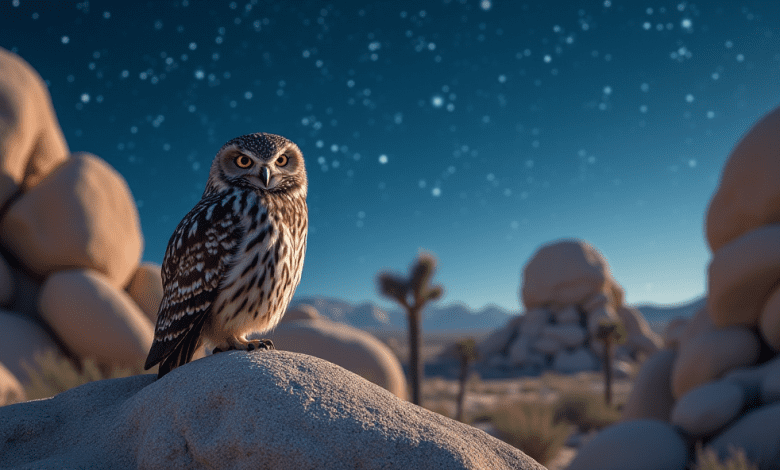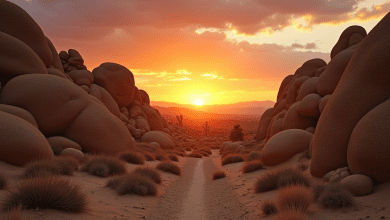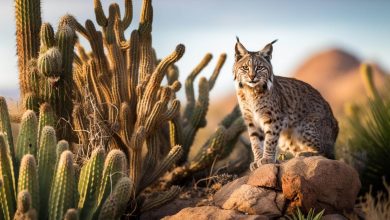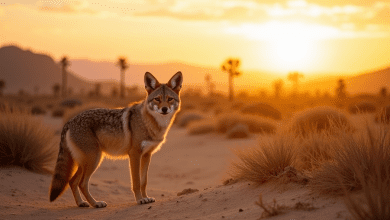Discovering the Fascinating Owls of Joshua Tree National Park: A Birdwatcher’s Guide

Owls at Joshua Tree National Park: A Fascinating Encounter with Nature
Introduction to Owls in Joshua Tree National Park
When you think of Joshua Tree National Park, the iconic Joshua trees, stunning rock formations, and breathtaking desert landscapes might come to mind. However, one of the park’s hidden gems is its diverse wildlife, particularly its impressive owl population. This article will delve into the enchanting world of owls at Joshua Tree National Park, discussing their habitats, behaviors, and the best ways to experience them in their natural environment.
Understanding the Owl Species Found in Joshua Tree
Joshua Tree National Park is home to several owl species, including the Great Horned Owl, Barn Owl, and Western Screech Owl. Each species has unique characteristics and adaptations that allow them to thrive in the park’s arid climate.
Great Horned Owl
The Great Horned Owl is one of the most recognizable owls in North America. Characterized by its tufted “horns,” yellow eyes, and strong, muscular body, this owl is a top predator in the park. They typically hunt at dusk and dawn, making them crepuscular by nature. Their diet consists primarily of small mammals, birds, and occasionally reptiles. If you’re lucky, you might spot them perched on a tree branch or gliding silently through the desert sky.
Barn Owl
The Barn Owl is known for its heart-shaped face and distinctive plumage. These owls are active hunters, primarily looking for rodents that thrive in the desert environment. They possess exceptional hearing, allowing them to locate prey even in complete darkness. Barn Owls are often seen hunting in open areas, and their ghostly appearance adds an element of mystique to the desert landscape.
Western Screech Owl
The Western Screech Owl is a small, stocky bird with a distinctive call that sounds like a whistle. These owls are more secretive than their larger relatives, often hiding in tree cavities or dense vegetation. Their camouflaged plumage helps them blend into their surroundings, making them hard to spot. They play a crucial role in maintaining the ecosystem’s balance by controlling rodent populations.
Best Spots to See Owls in Joshua Tree National Park
If you’re eager to catch a glimpse of these magnificent birds, knowing where to go is essential. Here are some of the best spots in Joshua Tree National Park to observe owls:
Hidden Valley
Hidden Valley is known for its stunning rock formations and diverse wildlife. It provides an excellent habitat for owls due to its abundant food sources and nesting areas. Early morning and late evening are optimal times for owl spotting, as they are most active during these hours.
Barker Dam
Barker Dam is another prime location for owl enthusiasts. This area attracts a variety of wildlife, making it a perfect spot to see owls and other birds. The calm waters of the dam provide a serene backdrop for birdwatching and photography, so don’t forget your camera!
Keys View
While primarily known for stunning panoramic views of the Coachella Valley, Keys View is also a great place to spot owls, especially during cooler months when they are more active. Bring your binoculars and enjoy the breathtaking landscapes while keeping an eye out for these elusive creatures.
Best Practices for Owl Watching
When observing owls in Joshua Tree National Park, it’s essential to follow ethical wildlife viewing practices to ensure both your safety and the well-being of the owls. Here are some tips to enhance your owl-watching experience:
-
Keep Your Distance: Always observe owls from a respectful distance to avoid disturbing them. Using binoculars or a camera with a zoom lens will allow you to enjoy their beauty without intruding on their space.
-
Be Quiet: Loud noises can scare owls away, so keep your voice to a whisper and avoid sudden movements.
-
Be Patient: Spotting owls can take time, so be patient and enjoy the natural surroundings while you wait for a glimpse.
-
Visit During Their Active Hours: Generally, owls are most active at dusk and dawn. Plan your excursions around these times for the best chances of seeing them.
-
Educate Yourself: Learn about the specific owls found in the area and their behaviors. Understanding their habits can greatly enhance your viewing experience.
Conclusion: The Magic of Owls at Joshua Tree
Owls in Joshua Tree National Park offer a fascinating glimpse into the beauty and complexity of desert wildlife. By understanding their habitats and behaviors and knowing where and how to look for them, you can create unforgettable memories while appreciating the natural world. So pack your binoculars, respect the wildlife, and immerse yourself in the mesmerizing experiences that owls at Joshua Tree National Park have to offer.
Whether you’re an avid birdwatcher or exploring the park for the first time, the majestic presence of these nocturnal hunters will undoubtedly enrich your visit. Happy owl watching!




